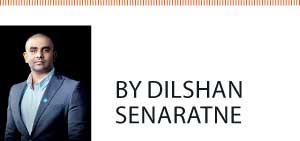18 Jan 2023 - {{hitsCtrl.values.hits}}

Today, the internet is so closely intertwined with our lives that it’s hard to imagine a time when things weren’t quite this way. But the internet has evolved to its current capability over a period loosely spanning three decades.
this way. But the internet has evolved to its current capability over a period loosely spanning three decades.
Web 1.0 or the first iteration of the internet came to be with the invention of the hypertext transfer protocol (HTTP) by Tim Berners-Lee in 1989. Web 1.0 is referred to as the ‘Read Only Web’, considering the one-way push of content from a limited pool of content creators.
The internet as we know it today achieved mainstream consumption around the dawn of the new millennium and is referred to as ‘Web 2.0’ or the ‘Participatory Web’. Today, the internet is an arrangement of information in the form of dynamic, rich content created by a mass population of content creators, including corporations and individual users. The shared onus of creating content has led to some of the staple use cases of today’s internet, including social media, personal blogs and reviews, further testifying to the participatory feature of Web 2.0.
Web 3.0 - Future internet
Web 3.0 is the ongoing iteration of the internet referred to as the ‘Semantic Web’, characterised by democratised ownership of data, interoperability and distributed ledger technologies, which drive data decentrally.
Upon transition, the future internet will connect users across a decentralised network with ownership of their individual data in contrast to the current centralised ownership of data by large tech corporations. This version of the web will involve the capability of machines to process natural language and provide contextual responses going beyond the phrase matching functionality of today’s search engines.
Furthermore, with the advancement of blockchain technology, currencies will evolve towards digital money with peer-to-peer transactional capabilities, removing the premium charged by trust service providers. Additionally, tokenisation will inherently transform the way physical assets are used, stored and exchanged, providing the required context for virtual realities to exist parallel to physical reality.
If these use cases sound straight out of science fiction, consider that many of these technologies exist today in their infant forms and are showing exponential growth towards mainstream adoption. A future where we exist primarily in virtual realities is neither distant, nor improbable and the question now is what roles we play as nations, organisations and individuals in this assured future reality.
Quantifying US $ 116bn opportunity
The internet services industry is projected to reach US $ 632.4 billion by the year 2027. System integrators, SaaS businesses and BPM firms that constitute the bulk of Sri Lanka’s IT-BPM industry is web-enabled and is included in the global internet service industry. Today, Sri Lanka generates an approximate US $ 1.5 billion, 2 percent of GDP from the IT-BPM industry, in comparison, India generates 8 percent of its total GDP from its tech industry. In this context, the global Web 3.0 industry is estimated to reach US $ 116.5 billion by the year 2033, growing at 44.9 percent CAGR in the period under review compared to the 5 percent CAGR growth projection of the traditional internet service industry.
The case for placing focus on the rapidly growing, unsaturated Web 3.0 industry is clearly apparent for Sri Lanka’s tech industry that is struggling to maintain pace against the dominant neighbouring competition from India, Bangladesh and other regional markets, while also countering the brain drain caused by the country’s unstable economic climate. Regulatory intervention, fund allocations and policy level facilitation are all required urgently to ensure that Sri Lanka gains an early mover advantage in the Web 3.0 industry.
An urgent call to action
For founders and businesses, it’s important to push the envelope on innovation by gaining a deep understanding of how emerging Web 3.0 technologies will shape the future and transform industries. The nascent nature of most Web 3.0 technologies offers an incomparable opportunity but also has few guardrails and a limited pool of expert knowledge. It’s up to early entrepreneurs to shape the future of the Web 3.0 industry and for Sri Lanka the focus should be placed squarely on being part of the blue ocean.
At first glance, the sectors of government, banking, IT-BPM, tourism, real estate, arts, healthcare, retail and logistics seem the most primed for transformation. Decentralised technology architectures open the door to re-imagine many of these industries in terms of democratised ownership, self-executing, smart contracts, tokenised digital assets and peer-to-peer transactions.
While entrepreneurs and founders traverse the uncharted, for established Sri Lankan enterprises, the opportunity is to capitalise on Web 3.0 quicker than the adoption of Web 2.0 in the past decade. Given everything that has come to pass, it’s clear now that old ways won’t open new doors and it’ll serve Sri Lanka well to remember that.
(Dilshan Senaratne is a technology marketer and business consultant with over 12 years of industry experience engaging with top local and regional blue chips. At present, he heads talent brand globally and corporate communication for APAC and EME regions for a US $ 2 billion US-based technology services provider. He holds an MBA from the University of Birmingham City (UK) and is an avid researcher and writer of emerging technology themes, including Web 3.0, blockchain and cryptocurrency)
05 Nov 2024 4 minute ago
05 Nov 2024 7 hours ago
04 Nov 2024 04 Nov 2024
04 Nov 2024 04 Nov 2024
04 Nov 2024 04 Nov 2024